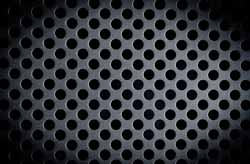Tiny holes that increase protection
The Al2O3 coating is very hard and non-reactive, enhancing durability and preventing corrosion. The metal–oxide layer is highly porous, also facilitating adhesion of subsequent layers for colouring or sealing. Exquisite control of pore formation and geometry can significantly improve the performance and lifetime of anodised aluminium. Such nano-scale control is not possible with current industrial anodisation processes. EU-funded scientists working on the project 'Nano-structured aluminium oxide coatings' (NANOCOAT) investigated the requisite nano-structuring process for large-scale applications. Researchers studied process materials and parameters for anodisation of pure Al, Al alloys and Al with inclusions. Scientists obtained a well ordered structure on pure Al and some Al alloys (those with high copper content are more problematic). Computational fluid dynamics models were used to model the circulation system for anodisation in order to optimise parameters for the prototype and scale-up system. Results at lab-scale were reproduced in an industrial environment for the first demonstration of nano-structured oxidation of Al alloys at industrial-scale. In addition, the black colouration obtained without opening pores was uniform after a double anodisation procedure with constant micro-hardness of the oxide. A simplified life-cycle analysis was carried out to address production issues related to environmental legislation. A complete techno-economic assessment compared energy consumption of the NANOCOAT process with conventional oxidation processes. Despite higher energy requirements and capital expenditures than conventional processes, these novel coatings are well suited for application in high-performance optics, aerospace and space components, and high-value consumer products. NANOCOAT has made important advances in controlling the growth of highly organised, nano-structured Al2O3 coatings for enhanced performance and durability. The surface finishing industry is dominated by small- and medium-sized enterprises (SMEs) that supply a wide range of products to numerous industries of strategic importance to the EU economy. Project technology will thus have important impact on the competitive positions of both SMEs and their customers.



